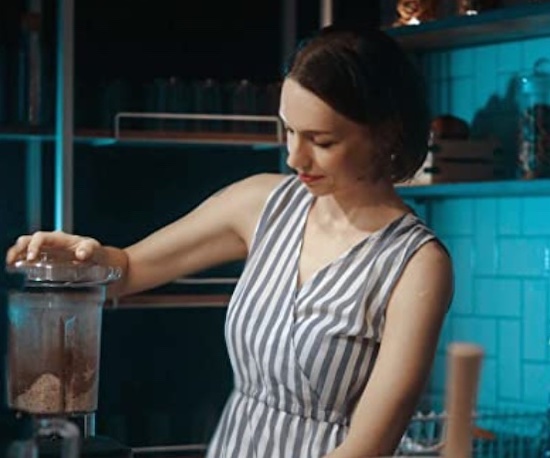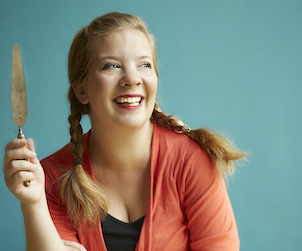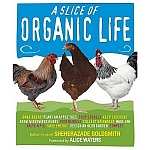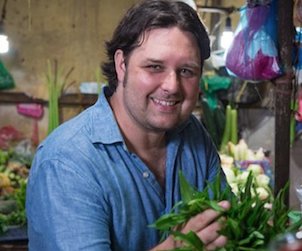Malcolm Jolley talks to Nazli Develi about her innovative fusion cookbook…

It’s all in the title: New Nordic Meets Old Italian: Perfectly Paired 45 Vegan Pasta Sauces. The book comes from Stockholm-based author Nazli Develi, who runs the GREEN & AWAKE Plant Food Design Studio. It’s a brilliant fusion of three of the biggest cooking trends in the last twenty years, and beautifully photographed and packaged. Here is finally a cookbook to awaken us out of our pandemic cooking doldrums, and to give us a literally fresh new look at pasta and sauce.
When I received a press release for New Nordic Meets Old Italian, I contacted Develi and we developed a correspondence which forms the interview below. In it she explains why Nordic cuisine adapts well to Italian and how she adapted Scandinavian and Mediterranean customs to an all plant-based collection of recipes.
THE INTERVEW
Good Food Revolution: Who are you? What caught my interest about your book was the interesting mash-up of ‘New Nordic’ and ‘Old Italian’, then I noticed that all the recipes were vegan. Is there something in your background that led you to conceive of this unique concept?
Nazli Develi: I’m a plant food designer with an eye for details, chef, consultant and author. As a chef with limitless curiosity, experience and passion in Italian and New Nordic cuisine, I’ve observed some similarities. Both kitchens make a cult of freshness, the seasons and simplicity, these caught my attention first. I wanted to add some features to the concept by including some edible plants that are not widely used.
Yes, there are only vegan pasta sauces in the book. We can say that this is the embodiment of my passion for pasta. I created this concept because I really appreciate a high quality Italian pasta and Nordic ingredients; not separately, but together. I can eat both a high quality Italian pasta and vegan Swedish meatballs with lingon jam at the same time. I can enjoy a delicious spaghetti with beluga and celeriac while drinking a cup of warm glögg.

So, how would it be to combine them rather than take them separately? And the idea came up!
I tried to convey more vividly by gourmet plates such as marinated beluga in glögg (Sweden’s festive beverage – a kind of mulled wine) served with spaghetti and celeriac sauce. It was just fantastic with distinctly different levels of spicy sweetness of glögg with cherris and an earthy dish of celery.
GFR: How long have you been a vegan, and how did you develop recipes for things like the vegan Parmesan in the book, or ‘vegan seafood’?
ND: My first attempt was in 2014. I switched to a completely vegan diet in 2016. However, my body always rejected some animal based foods. Before going vegan, I was tend to eat sea food and Italian. I also couldn’t eat a fish if it comes with eyes on the plate. I’ve never eaten feta in my life, don’t know how it tastes. Just love hard style cheeses like parmesan. Similar story with the eggs too. It took my years to figure out this instinctive nutrition, ‘d say that everything is seated in place when I switched to the vegan diet.
This is where my work on vegan seafood comes from, so it’s entirely from my own experience. When you go vegan, you are constantly in an effort to develop these kind of dishes you are used to eat.
The book includes some simple recipes for parmesan, ricotta, buratta and hard italian style cheese which are made with nuts, probiotics, herbs and vegetables to accomplish your pasta.
The dishes in the book I have developed using some ingredients such as sea fennel, artichokes, palm heart, sea beans, oyster leaves, seaweeds, vegan caviar give you the taste of the ocean. Most of the foods we like are not about meat. In fact they are all about the spices and flavors we add to them. Lemon juice, old bay seasoning, tamari and nutritional yeast with those plants mentioned above, whether in the recipe or added at the end, is also reminiscent of many seafood dishes.
In “Gnocchi with skagenröra (a traditional seafood in scandinavia)” I combined nori crinkles, nordic oat tofu, chives, lemon juice, vegan creme fraiche , capers, oyster leaves, dill and seaweed caviar. The harmony and taste of each ingredient was fantastic.

In “A Taste of Northern Island” dish, combined gnocchi with nordic bilberry pearls and sea fennel, floated on the butterfly pea cream. It was the one of most loved plates that appeals to both the eyes and the palate.
GFR: I am glad you brought up the concept of appeal to the eye, because the photography in your book is really compelling. But it also makes me wonder if adopting a vegan diet, where one is restricted and limited in terms of ingredients doesn’t in another way broaden one’s sensory appreciation of food? Do you pay more attention to how food looks, or texture, how food feels in the mouth?
ND: In fact, I think the ingredients are not limited in a vegan diet. When we say animal based foods, we can count animal products limited. But there are countless edible options in the plant world, also little known and undiscovered species.
I pay attention to all; how the food looks on the plate, the texture, flavour and the experience itself.

I usually work separately on design, texture and flavors. Sometimes I think for days about how I can design my delicious dish that appeals to the eyes. Because food in itself doesn’t always look as good as it could or should, even if tastes good. It needs a little help from someone who truly loves it. When it’s done right, food presentation creates its own kind of magic. Sometimes I just draw. The food, then, fits into the photo.
GFR: Your answer reminds me a bit of Redzepi who saw in the New Nordic an expansive universe not a limiting one. Is the New Nordic cuisine particularly well suited to a plant-based diet?
ND: Yes, New Nordic is well suited to plant-based diet as it aims to make maximum use of seasonal fruits and vegetables.
In the Scandinavian countries the population has reasonable access to large quantities of foods from the wild countryside. Brassica family and root vegetables, nordic oats in particular love bitterly cold winters and draw all their energy from short and intense summers. Atlantic wakame which is grows in the cold arctic ocean and very strong tidal currents, mushrooms with several hundreds of different species and don’t forget to arctic delights such as wild berries, liquorice.
* * *
Find out more about Nazli Develi and New Nordic Meets Old Italian at gurmevegan.com. Or purchase a copy at Amazon.







